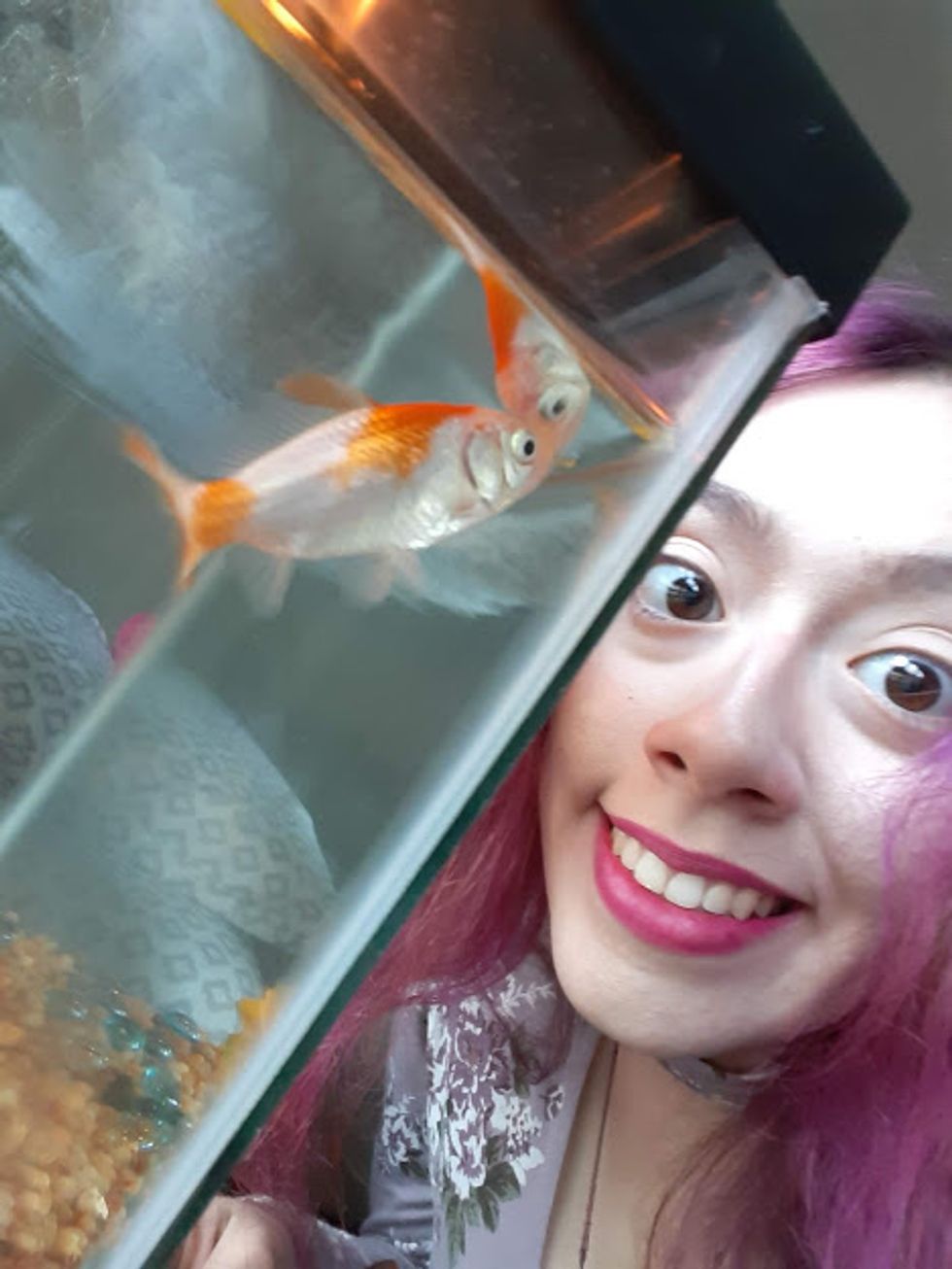As exciting as it is to move into college housing, there is one heartbreaking downside: saying goodbye to the family pet.
I've known people who've had to leave behind a cat, a dog, both a cat and dog, bunnies, turtles, just to name a few. Very few colleges allow pets in their student housing facilities. Some, like Principia College, may only allow an animal that can be confined to a cage. Even so, such pets may require documentation to be able to live in a residence hall. The only exception to this rule would be an emotional support animal, but that involves a lot of paperwork, as well as proof of a disability, in some cases. That being said, it might not be worth trying to sneak the family dog past your campus' accessibility services. That doesn't stop people, though; my boyfriend had an illegal hamster running around his suite his freshman year (not recommended!).
As disappointing as this reality may be for pet owners, it's probably for Fluffy's own good.
Most college housing facilities are not properly suited to adequately house a pet such as a dog or cat. Especially for those living in corridor-style housing, there is limited space for the animal to run around. At my own school, Stony Brook University, the only pets allowed in the residence halls other than support animals are non flesh-eating fish. No registration is required. That was all I needed to hear.
Between me and my roommate, we currently have three comet goldfish: Kirk, Lucifer, and Klaus. To help with cleaning, we added a sea snail named Diablo. Snails are really low-maintenance; you never have to feed them because they eat any algae or waste in the tank. Goldfish are super messy, so everyone wins. Despite not being able to pet a fish (you could if you're feeling brave, but they might bite your finger), research has found that watching fish swim can help to alleviate stress and elevate your mood. In fact, keeping fish strengthens feelings of companionship in the fish owner. Not too shabby for such a "boring" pet.
Fish get such a bad rap.
Everyone thinks that fish are boring and they don't do anything. They've been reduced to merely a "starter pet" for small children. As a fish mom myself, I can confirm none of that is true! Fish can be really exciting! Also, they are quite a bit of work.
I cringe when I watch the episode of Full House"A Fish Called Martin" when Michelle puts her new goldfish in a tiny fishbowl. Most fish need at least 10-20 gallons of water to live in, plus 10 more gallons for every additional fish, otherwise it'll stunt their growth. Not to mention, they cannot live in tap water; an anti-stress solution needs to be added to the water to make it safe for fish to live in. You really shouldn't keep a fish in a bowl, because they'd be living in the same water as it gets dirtier and dirtier. Instead, get a tank with a filter so that the water can cycle through, and so any dirt particles are kept out. Regardless of how big your tank is, you still need to change a quarter of the water every week or so. And yes, the new water needs to be treated.
Keeping fish gives me a purpose.
It started with one fish, then some snails, then more fish, then another snail. It was like I was building a family for myself. I had lives to be responsible for and little mouths to feed. I had great company in my room whenever my roommate was out. Sometimes the only sounds I'd hear would be my fish shifting around his pebbles. The best part is watching them grow. Most of the goldfish I've had were babies when I bought them, but some of them would start to get bigger by even a week's time! This is exciting stuff, really. I can only imagine how mothers feel when their human children start growing.
So what happens when it's time to move off campus?
I won't lie, transporting fish is an annoying process, but you get better at it with practice. To start, I put the animals in a tank with a vented top and fill it about halfway with conditioned water so the water doesn't slosh out as much during the drive. Once everyone's out of the big tank, little by little, I use fish tank-designated Tupperware to empty the tank water into a bucket, which gets dumped into the communal toilet.
Once the tank is empty, I'll take out the gravel. The gravel can be reused if it's clean enough. Just give it a quick rinse before using it again. Any fake plants should be washed, as it can be a hotspot for algae to grow. If you have any small tank decorations, it can't hurt to throw one in the travel tank just so your water children have something familiar to look at during the ride. Make sure not to speed home. Transporting fish is stressful for the fish themselves, so much so that they might die upon arrival. If you're able to go back and forth between school and home easily, it might be a good idea to set up the big tank at your house the day before so that it's ready for the fish to go into once they arrive. It's important to make them as comfortable as possible.
















